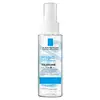What's inside
What's inside
 Key Ingredients
Key Ingredients

No key ingredients
 Benefits
Benefits

 Concerns
Concerns

 Ingredients Side-by-side
Ingredients Side-by-side

Water
Skin ConditioningButylene Glycol
HumectantGlycerin
HumectantPropanediol
SolventSorbitol
HumectantCeramide NP
Skin ConditioningCholesterol
EmollientPhytosphingosine
Skin ConditioningLactobacillus Ferment
Skin ConditioningBifida Ferment Filtrate
Skin ConditioningStearic Acid
CleansingCaprylyl Glycol
EmollientOleic Acid
EmollientCaprylic/Capric Triglyceride
MaskingHydrogenated Lecithin
EmulsifyingAllantoin
Skin ConditioningPanthenol
Skin ConditioningLactic Acid
BufferingBetaine
HumectantHydroxyethylcellulose
Emulsion StabilisingHydroxyacetophenone
Antioxidant1,2-Hexanediol
Skin ConditioningCaprylhydroxamic Acid
Water, Butylene Glycol, Glycerin, Propanediol, Sorbitol, Ceramide NP, Cholesterol, Phytosphingosine, Lactobacillus Ferment, Bifida Ferment Filtrate, Stearic Acid, Caprylyl Glycol, Oleic Acid, Caprylic/Capric Triglyceride, Hydrogenated Lecithin, Allantoin, Panthenol, Lactic Acid, Betaine, Hydroxyethylcellulose, Hydroxyacetophenone, 1,2-Hexanediol, Caprylhydroxamic Acid
 Reviews
Reviews

Ingredients Explained
These ingredients are found in both products.
Ingredients higher up in an ingredient list are typically present in a larger amount.
Allantoin is a soothing ingredient known for its protective and moisturizingg properties. Because of this, it is often added to products with strong active ingredients.
Studies show higher concentrations of this ingredient can promote wound healing.
Though it can be derived from the comfrey plant, allantoin is produced synthetically for cosmetic products to ensure purity.
Learn more about AllantoinGlycerin is already naturally found in your skin. It helps moisturize and protect your skin.
A study from 2016 found glycerin to be more effective as a humectant than AHAs and hyaluronic acid.
As a humectant, it helps the skin stay hydrated by pulling moisture to your skin. The low molecular weight of glycerin allows it to pull moisture into the deeper layers of your skin.
Hydrated skin improves your skin barrier; Your skin barrier helps protect against irritants and bacteria.
Glycerin has also been found to have antimicrobial and antiviral properties. Due to these properties, glycerin is often used in wound and burn treatments.
In cosmetics, glycerin is usually derived from plants such as soybean or palm. However, it can also be sourced from animals, such as tallow or animal fat.
This ingredient is organic, colorless, odorless, and non-toxic.
Glycerin is the name for this ingredient in American English. British English uses Glycerol/Glycerine.
Learn more about GlycerinPropanediol is an all-star ingredient. It softens, hydrates, and smooths the skin.
It’s often used to:
Propanediol is not likely to cause sensitivity and considered safe to use. It is derived from corn or petroleum with a clear color and no scent.
Learn more about PropanediolWater. It's the most common cosmetic ingredient of all. You'll usually see it at the top of ingredient lists, meaning that it makes up the largest part of the product.
So why is it so popular? Water most often acts as a solvent - this means that it helps dissolve other ingredients into the formulation.
You'll also recognize water as that liquid we all need to stay alive. If you see this, drink a glass of water. Stay hydrated!
Learn more about Water